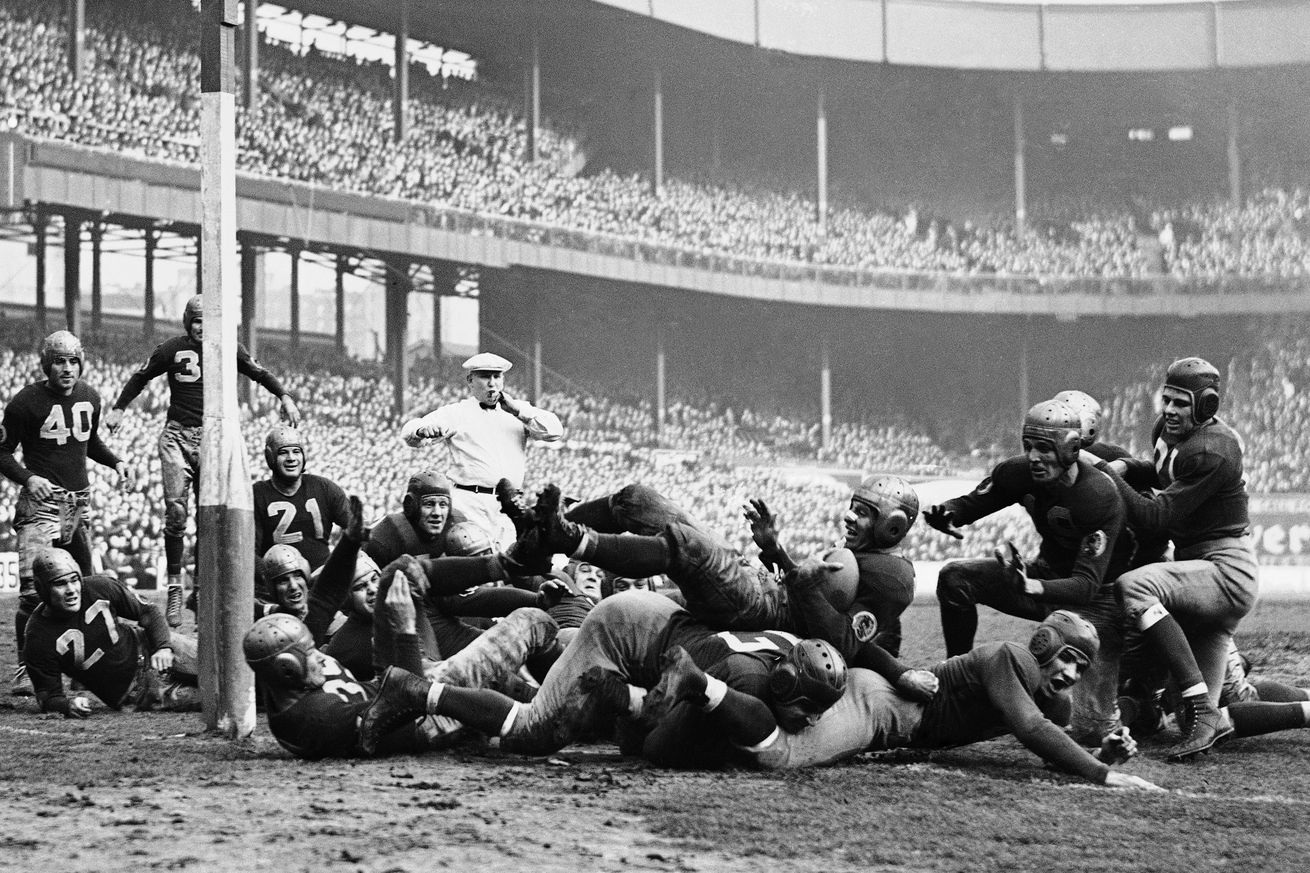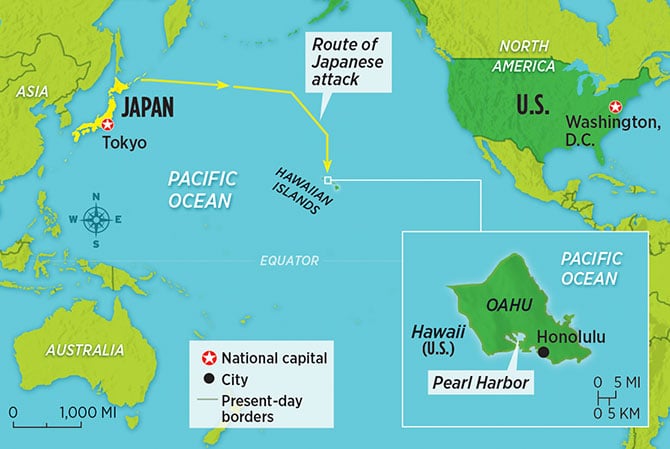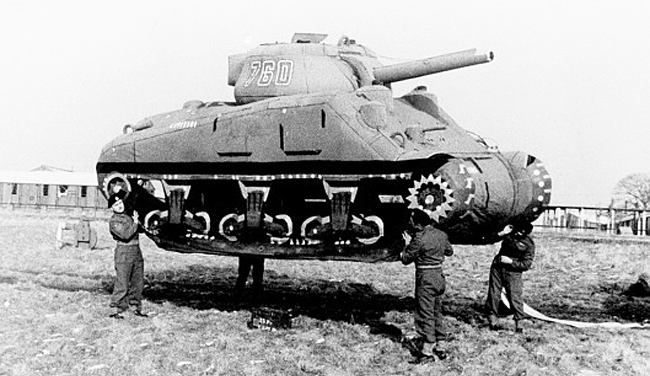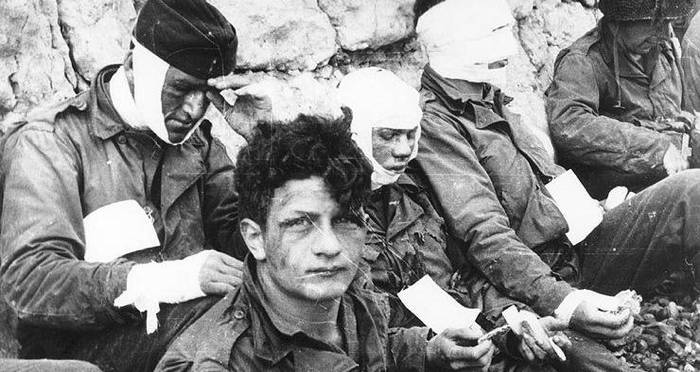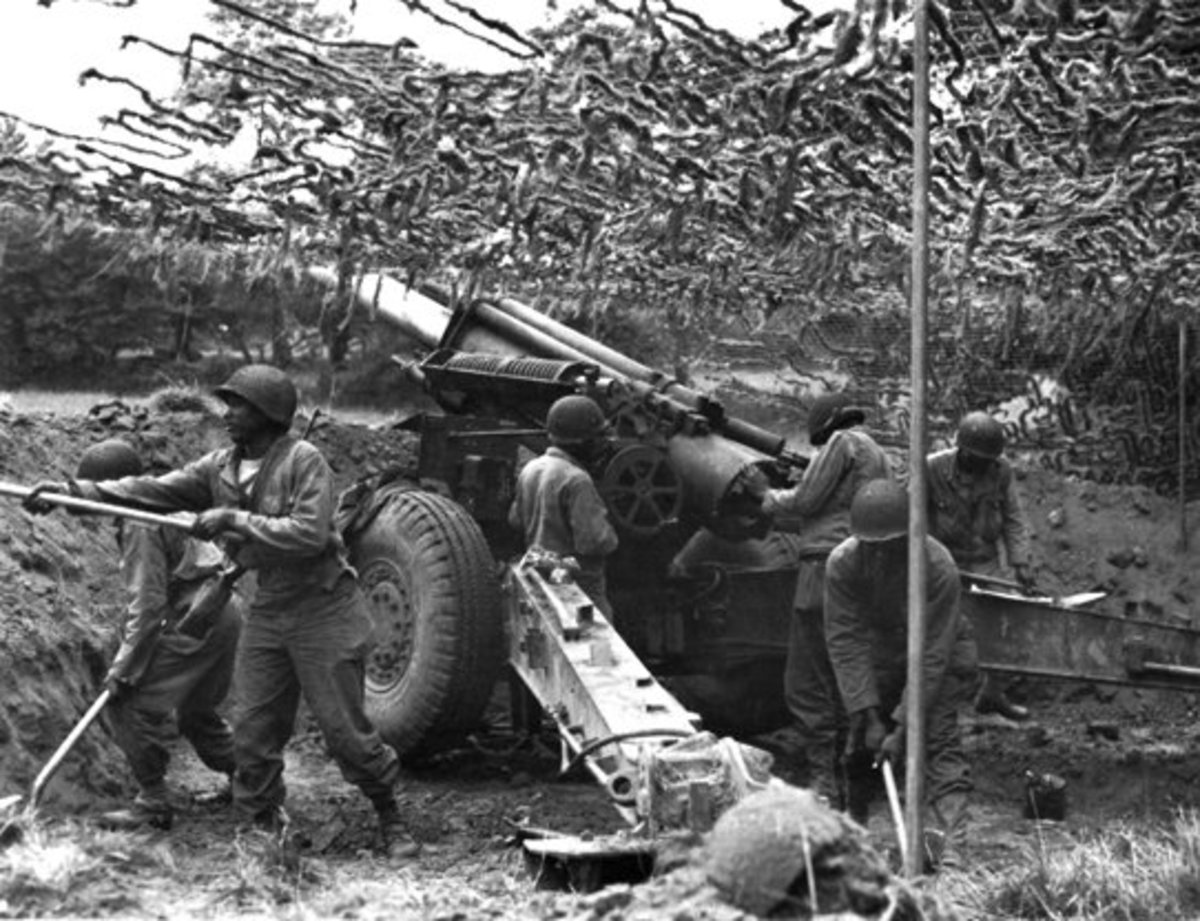Pearl Harbor
December 7th, 1941 – “A Day That Will Live In Infamy”
Think of it, you are relaxing on a Sunday afternoon in early December. You decide to listen to the football game on the radio.
Family listening to radio
Picture taken at the game on December 7th, 1941 between the Washington Redskins and Philadelphia Eagles
You are having fun listening and then you hear this.:
What do you think??? Why did the Japanese do that? Where is Pearl Harbor? What does it mean for the country? What does it mean for me, my brother, my father? How will ALL my family be affected?
Where Did It Happen?
See >>>Japan on the left, and the U.S. on the right
WHY Did It Happen???
The strike was intended to hurt the U.S. Pacific Fleet (U.S. Navy In The Pacific Ocean). This would allow Japan to continue to conquer more territory as they went looking for natural resources such as oil and rubber in Malaya and the Netherlands East Indies.
Notice the highlighting to locate of both Malaya and Netherlands East Indies. Japan could get natural resources there they did not have on their own islands.
Japan felt they needed to attack us because we were starting to tell them to stop expanding and conquering their neighbors for selfish reasons.
In fact we had stopped sending them materials they needed to keep making weapons.
What made Japan the most angry with the U.S. was that after the Japanese had moved into the nearby country of French Indochina (Modern day Vietnam), the U.S. stopped sending oil to Japan in the Summer of 1941. THAT was when Japan started developing final plans to attack.
They felt that if they could hurt our Navy at Pearl Harbor enough then we would not have the power to stop them from expanding.
WHEN and HOW did It Happen???
The U.S. Navy ships the Japanese were attacking were kept at Pearl Harbor in Hawaii. Hawaii is an Island, so the attack had to be made by Japanese navy ships. The distance was 3,901 miles from Japan , so they had to start out WAY ahead of time. In fact they left Japan November 26th, 1941.
In the mean time, their government people were in Washington D.C. bargaining for a deal so the two countries could get along.
This had been going on for a long time, and they had decided they could not come to an agreement with the U.S., but they had decided to not tell the them right away so they could continue preparing their attack.
The morning of December 7th, 1941 they were finally delivering a message to the U.S. about their desire to stop bargaining with the U.S. Government. However, this message said NOTHING about them going to war against us.
The Japanese government people are on the left and right of the U.S. government man they had been talking to. This picture was taken AFTER they had talked on December 7th, and AFTER the U.S. was aware the attack had started. Look at the expression on the face of the man in the middle. What do you think he was thinking at that moment?
The problem for them was that this message was delivered after the attacks had started. That means it was considered a sneak attack, which made EVERYONE in the U.S very angry, and MUCH more likely to agree to go to war and do anything necessary to win.
The Attack
Both of these movie clips are from the same movie, and use some of the same scenes, but are not exactly the same. One starts earlier, and the other goes longer into the movie. You should watch both of them so you get the fullest view of the attack on Pearl Harbor.
Clip #2
This clip shows something that actually happened. An African American cook, Dorrie Miller, had been only allowed to work as a cook due to the discrimination of the time. however, when tit was needed, he got on this weapon, twin- 50 caliber machine guns, and shot down at least one Japanese plane.
The Japanese started attacking everything. They attacked the Battleships.
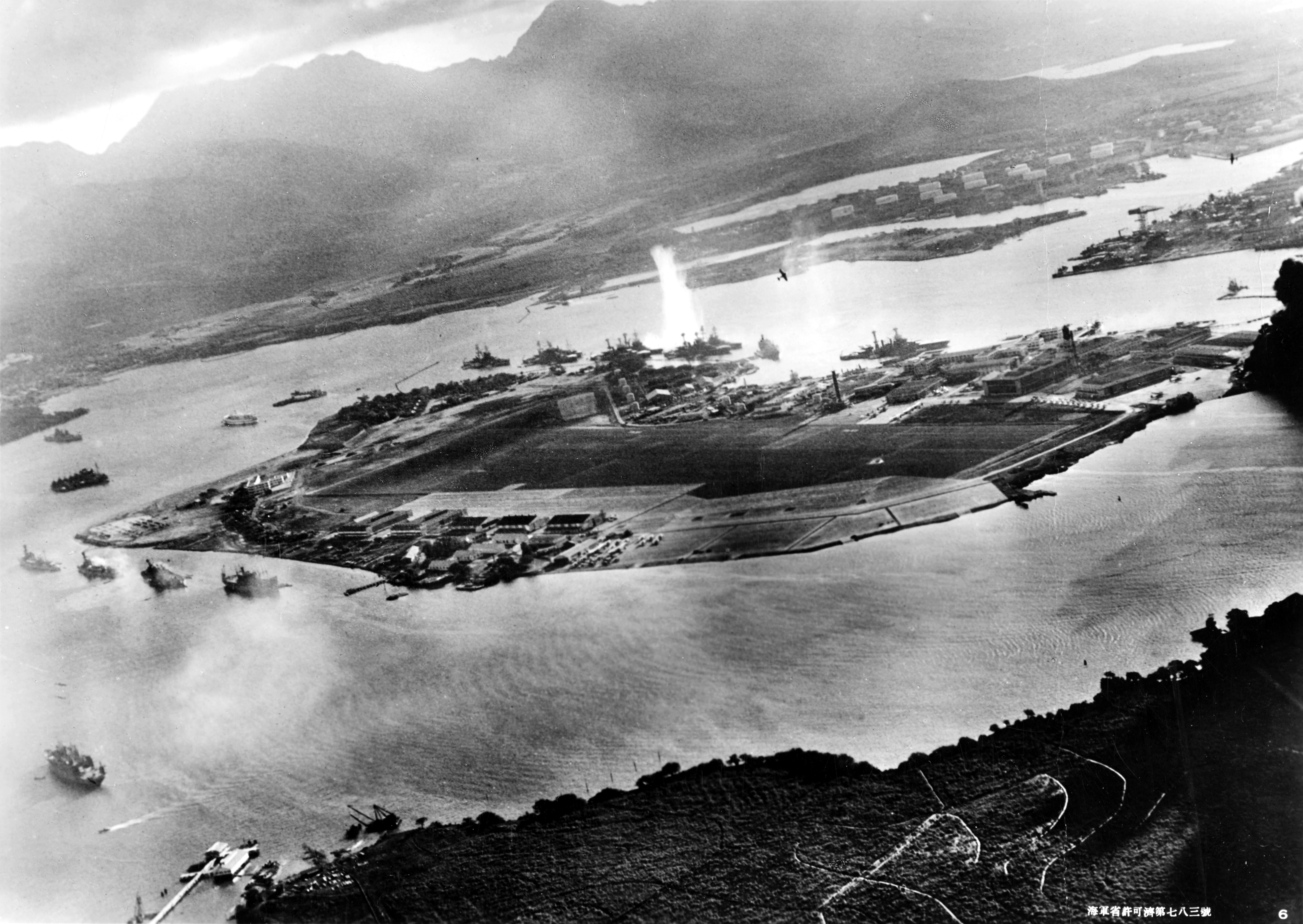
You can see the white splash of the 1st Japanese bomb hitting a U.S. Battleship
They attacked smaller ships called Destroyers.
There were even bombs dropped on the Hospital by Japanese planes.
Some of the Sailors who could not be identified after being killed that morning were buried here
The Result:
The U.S. people wanted Japan to pay for what they had done, and not with money.

The Japanese surprise attack was the single biggest thing that changed the minds of people in the United States. They moved quickly from ISOLATIONISM (REMEMBER WHAT THIS MEANS???) to direct involvement.
- We declared war on Japan on December 8th, , 1941
Watch President Roosevelt speaking:
See some of the words you just heard him say:
- Yesterday, December 7th, 1941 -- a date which will live in infamy -- the United States of America was suddenly and deliberately attacked by naval and air forces of the Empire of Japan.
The United States was at peace with that nation and, at the request of Japan, was still in conversation with its government and its emperor looking toward tkeeping peace in the Pacific.
Indeed, one hour after Japanese air squadrons had commenced bombing in the American island of Oahu, the Japanese ambassador to the United States and his colleague delivered to our Secretary of State a formal reply to a recent American message. And while this reply stated that it seemed useless to continue the existing diplomatic negotiations, it contained no threat or hint of war or of armed attack. - Japan declared war on the U.S. officially on December 8th (Don’t you think they did it with the first bomb dropped on December 7th???).
- Germany declared war on the U.S. on December 11th, 1941.
- The U.S. declared war on Germany and Italy on December 11th, 1941.
Four years later between 62 to 78 million people would be dead who were alive when the war started in 1939. 418,500 of them were U.S service people who had given their lives (died) fighting for freedom.
Battle of Midway: June 4th-7th, 1942
The United States was hurt a lot at Pearl Harbor.

Pearl Harbor Damage
Things were not looking good for the United States in the war in The Pacific.
Between May 4th and 8th we and the Australians fought a battle at sea against the Japanese Navy. It was in an area of the Pacific called The Coral Sea.

The Japanese destroyed more of our ships and airplanes than we destroyed of theirs. However, we stopped the Japanese plan to invade Australia. It was kind of a draw (nobody won).
The place where this fight happened is near Australia
The Japanese destroyed more of our ships and airplanes than we destroyed of theirs. However, we stopped the Japanese plan to invade Australia. It was kind of a draw (nobody won).
This set the stage for what would happen two months later near a little island in the middle of the pacific controlled by The United States called Midway Island.
See Midway Island to the North and West of Hawaii
What Happened:
Japanese commander Admiral Isoroku Yamamoto moved toward Midway to try to get the U.S. ships to follow and attack him. He thought he was so much more powerful that he could destroy the U.S. Navy's aircraft carriers.
U.S.S. Enterprise aircraft carrier. See the planes on her deck?
Yamamoto's surprise was ruined by American communications information (intelligence), which figured out his plan well before the battle started. This allowed Admiral Chester W. Nimitz, the U.S. Pacific Fleet commander, to set an ambush (where you sneak up on someone and attack them). On 4 June 1942, the fight started.
At 0430 (4:30 AM) in the morning of 4 June 1942, still 240 miles away from Midway Island, Japan launched 108 attack planes from their four aircraft carriers to attack the U.S. base at Midway Island.
What the Japanese did not know was that there were three U.S. aircraft carriers only 215 miles from the Japanese ships. The two opposing fleets (groups of navy ships) sent out search planes to try to find each other. Seaplanes (planes that could land on water) from Midway were also patrolling along the expected Japanese attack path. One of these spotted, and reported, the Japanese ships at about 0530 (5:30 am).
What the Japanese did not know was that there were three U.S. aircraft carriers only 215 miles from the Japanese ships. The two opposing fleets (groups of navy ships) sent out search planes to try to find each other. Seaplanes (planes that could land on water) from Midway were also patrolling along the expected Japanese attack path. One of these spotted, and reported, the Japanese ships at about 0530 (5:30 am).
U.S. Seaplane
Remember, the Japanese, not knowing the U.S. Aircraft carriers were so near, were attacking the Midway Island. They did some damage to buildings on the island.
The leaders of the U.S. navy ships decided they had to attack right away before the Japanese found them. They could not send all of their planes, but they sent the ones that were ready to go. They were torpedo planes (planes that can launch a torpedo from their belly.
EVERY ONE of them was destroyed. Not a single U.S. torpedo hit a Japanese ship. All 15 U.S planes in the attack were shot down by Japanese fighter planes, killing all pilots.
U.S. torpedo bomber. They dropped their torpedo into the water so it would go under water and hit an enemy ship
Those men’s lives were not wasted, because the Japanese planes protecting their ships were now out of gas and bullets, so they had to land to get more. The Japanese planes that had attacked the island were also getting more fuel, bombs, and bullets. Now the protecting planes also landed on the Japanese ships to also get more fuel and bullets.
What this all means is that the Japanese were taking a LOT of time, and had all kinds of gas, bullets, bombs, and torpedoes sitting around on the deck their ships. The deck is the flat top where planes land and take off.
U.S. dive bomber aiming for Japanese ships
Why was that such a big deal? Well, what do YOU think would happened when bombs start hitting a place where there is a lot of gas, bullets, bombs, and torpedoes sitting around? Right, large BOOMS!!!
Movie scene of U.S. dive bombers hitting Japanese aircraft carriers
When the fighting was finally over on June 6th, 1942 we (The U.S.) had sunk 4 of the most important Japanese aircraft carriers.
Japanese carrier Hiryu burning before sinking
Why was The Battle of Midway such a BIG Turning Point???
Prior to this fight, Japan had a HUGE navy advantage over the United States and could usually pick where and when to attack. After Midway, the we were pretty much equal in power with the Japanese. This allowed US to soon start attacking the Japanese instead of sitting around waiting for them to hit us. Eventually we were stronger than the Japanese.
Stalingrad:
July 17th , 1942 – February 2nd, 1943
Where It Was

Stalingrad is in the southern part of the Soviet Union

Stalingrad was a target because it had a lot of factories
How bad it would get in Stalingrad before it was all over:
"I watched my mother and father die. I knew perfectly well that they were starving. But I wanted their bread more than I wanted them to stay alive. And they knew that. That’s what I remember about the blockade: that feeling that you wanted your parents to die because you wanted their bread."
-Soviet Soldier in Stalingrad
-Soviet Soldier in Stalingrad
Hardship: 478,741 soldiers killed or missing; 650,878 soldiers wounded and sick; 40,000 civilians dead; 4,341 tanks destroyed; 15,728 guns and mortars destroyed; 2,769 combat aircraft demolished.
Germany had tried to invade the Soviet Union the year before, and been stopped. Spring and then Summer had come in 1942, and the Germans made it clear they had not given up after being stopped in December. They tried again.


The green lines show how the German army moved to Stalingrad when they started again
Why Attack Stalingrad ?:
The capture of Stalingrad was important to Adolf Hitler, and Benito Mussolini, for this reason:
- The city was an important center for transportation. If the Germans could capture Stalingrad they would hurt the Soviet ability to send supplies and people from one place to another to fight them.
They also felt that if they could keep moving in this area they would capture areas that produced oil, which would keep fuel from the Soviet army.

These towers were used to pump oil from the ground which was used to make fuel for planes, trucks, and tanks. This was what the Germans wanted to get.
What Happened:
The German attack to capture Stalingrad started in late summer 1942, supported by heavy Luftwaffe bombing which reduced much of the city to rubble. The German attack eventually slowed down in house-to-house fighting, and despite controlling over 90% of the city at times, the German army was unable to get rid of the last Soviet defenders holding desperately on.


The Soviets were holding on in the small space where all of the arrows, which stand for German attacks, are going.
In November 1942, the Red Army (Soviet Union Army) launched Operation Uranus; a two-pronged attack specifically targeted at the Romanian and Italian (they were weaker and not as skilled as the Germans) forces protecting the German 6th Army flanks (sides).

This map shows the Soviets attacking from above and below Stalingrad, and trapping the Germans there.
The success of these attacks caused much of the German army to collapse and an entire group, the 6th German Army, to be cut off and surrounded inside Stalingrad. The fighting became a house to house conflict where the soldiers fought in buildings and streets that had been destroyed.
Soviet soldiers fighting in the streets around buildings that had been destroyed
As the Russian winter set in, the German 6th Army weakened rapidly from cold, starvation and constant Soviet attacks. The fighting got so bad that at times they would do battle in the sewers underground. Men would kill each other with pistols, knives, clubs, and brass knuckles. The Germans took to calling in Rattenkrieg which means fighting in very nasty conditions, including in sewers where rats live.


German soldiers fighting in the Stalingrad sewers
Adolph Hitler refused to allow the German army to retreat, or to try to break out of the Soviet army circle that was around them. They were doomed when it proved impossible to get supplies to them by airplane. By early February 1943, Germans in Stalingrad had either stopped fighting and surrendered or had been destroyed.
What It Meant:
For Germany:
Men:
- 750,000 men killed, missing or wounded
- 91,000 captured
These men could not be replaced after already being at war for four years.
Equipment:
12,000 guns and mortars destroyed
3,000 aircraft destroyed
This amounted to almost half a year’s worth of the weapons German companies could make. It could not be replaced fast enough.
For The Soviet Union:
Men:
Yes, they had lost over 1 million killed, but it did not matter. They were a large country, and had a lot of men that could be sent into battle.
Equipment:
It did not matter here either. They were getting weapons from the U.S., and their factories were making massive numbers of all kinds of weapons.
Normandy – D-Day in France:
June 6th, 1944
U.S. army soldiers approaching the Normandy beech on the morning of June 6th - This is from a movie, but it does show what it was like
Josef Stalin, leader of the Soviet Union, had been pushing President Roosevelt (Of The U.S.A.) and prime Minister Churchill (Great Britain) to open up a “Second Front” for some time. The Soviets had been doing most of the fighting and dying for some time. Yes, there had been fighting at many places around the World, but Stalin wanted something big. He wanted a MAJOR attack by the British and Americans to come from Western Europe. He wanted to force the Germans to have major battles on two sides (With the Soviet Union in the East, and with the rest of the Allies in the West.).
That meant an attack somewhere in Occupied France. It was called occupied because who was there running things? The French??? NO!!! It was the Germans in charge. They had been since they conquered France back in 1940.


Occupied France is in red
In fact we were already close. The English Channel (body of water that separates France and England) at its smallest place separates England and France by only 21 miles.


Why Did We Do It:
Was it simply to please Communist leader Joseph Stalin??? NO!!! Everyone knew that if Germany was not forced to fight The Allies from several directions at once we might NEVER defeat them. They needed to be dealt with and controlled. Like a mad dog in the streets.


Mad dog in street
Looking at this map of Major Nazi Concentration camps all through the areas of Europe they had conquered SHOWS you WHY we needed to crush them once and for all.

(click for larger version of the map)
So a team was put together, led by Gen. Eisenhower of The United States. The official name for the plan was “Operation Overlord.”
Preparation:
The attack would come across the English Channel from England.

The goal was to hit the “Atlantic Wall” of forts and “Strong Points” that the Germans had built along much of the coast of countries they had conquered.

They had about four years (1940-1944) to get ready for the invasion attempt they knew would some day come.


Path of the D-Day Invasion of France
The goal was to hit the “Atlantic Wall” of forts and “Strong Points” that the Germans had built along much of the coast of countries they had conquered.

The red line shows where the Germans built their "wall," which was a line of forts.
They had about four years (1940-1944) to get ready for the invasion attempt they knew would some day come.

French people forced to build the wall
They never finished all they planned, but they did prepare VERY strong and deadly forts that would make it hard to push them out.

They even prepared some obstacles (An obstacle is something that stops you from going where you want to go and doing what you want to do.) on the beaches in case they were attacked from the sea.


The pictures show two different types of beach obstacles
A strong and deadly fort
They even prepared some obstacles (An obstacle is something that stops you from going where you want to go and doing what you want to do.) on the beaches in case they were attacked from the sea.

.

The pictures show two different types of beach obstacles
In order to keep the Germans guessing about where they would attack the Allies built fake bases with fake airplanes, fake buildings, and even fake inflatable tanks.
Decoy inflatable tank. How can you tell it is not a tank made out of metal?
From the air all these things looked like they just might be real. Then the Allies even spread news of the creation of a HUGE new army group (The truth was that it did not really exist.)

Fake airplane - Would look real from high in air
All the time we were building up REAL armies with HUGE piles of supplies. There were over 2,000,000 men preparing to participate in the invasion and attack the Germans. They estimated they would need 215,570 vehicles (jeeps, trucks, tanks, etc.) and 32,890 planes for just the first 6 months after landing to attack the Germans.

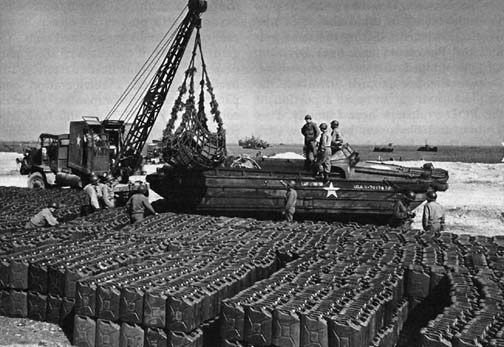

A field full of tanks in England before D-Day

Cans of gas for use in the invasion
This chart shows what the expected need for supplies would be in just that first 6 months for ONLY the U.S. army:
For some time (a long time) leading up to the actual day of invasion our air force bombers dropped bombs over LARGE areas to destroy German soldiers, German cannons, German tanks, and German forts. They even dropped bombs in areas they did not plan to attack right away so they could fool the Germans right up to the last minute.

U.S. bombers coming back from dropping bombs on Germans in France before D-Day

U.S. bombers coming back from dropping bombs on Germans in France before D-Day
The Invasion of “Fortress Europe”
It was called “Fortress Europe” because Europe had been locked up for 4 years by the Germans like it was a fort. Also like a fort, to get in , we had to attack in a very strong way. It was supposed to start on June 5th, 1944, but the weather was so bad our ships could not safely go across the English Channel from England to a place in France called Normandy.
Map of D-Day attack plan - They left from England and headed to France
The weather improved, and the decision was made to go on June 6th. The first ones to go in were our Paratroopers. Over 24,000 U.S., British, Canadian, and Free French airborne troops jumped out of airplanes as early as 1:00 AM.
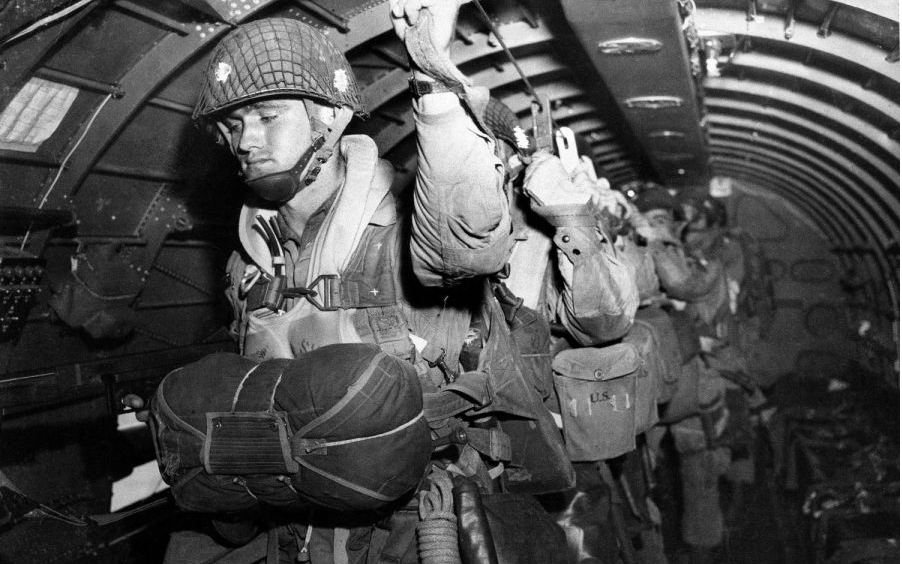
We can only imagine the thoughts going through their minds as they prepared to jump into the unknown.

U.S. paratroopers getting ready to jump out of the plan EARLY in the morning on June 6th, 1944
We can only imagine the thoughts going through their minds as they prepared to jump into the unknown.
Look at the different facial expressions. What were they thinking?
This part of the attack did not go as planned, but was so confusing the Germans thought there were many more Allied soldiers than there actually were.
At about 4:00 AM our army soldiers started heading from the boats carrying them toward the shores where the Germans were.
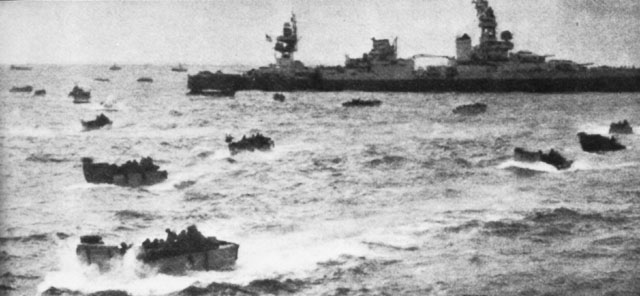
They got there at about 6:00 AM. (Some of the beaches attacked were easier to capture, and some were MUCH harder.


Little boats full of soldiers leaving the bigger boat, and heading to the beach to kick the Germans out
They got there at about 6:00 AM. (Some of the beaches attacked were easier to capture, and some were MUCH harder.

Both images show U.S. soldiers trying to get on the beach to attack the Germans
The Germans had some of their best troops guarding the beach code named Omaha. They killed and wounded many of our men, some of them before they even got out of the water. They were trapped on the beach with many of their leaders killed.
Soldiers on the beach waiting for more help while sitting safely out of the line of fire
German soldier Franz Gockel, firing a machine gun from above the beach that day later said:
“"We shot at everything that moved. The beach was soon covered with the bodies of American soldiers."”
| |
Eventually an American General named Norman Cota arrived in the area where our troops were hiding on the beach getting killed and wounded, reluctant to go forward.

He said to them:
His words had the effect he wanted, and the men started to move to attack the Germans. Other Allied soldiers on other beaches in the area did the same, and started to push the Germans back.



Soldiers on the Omaha Beach right at the water hesitating to move forward due to the danger
He said to them:
“Gentlemen, we are being killed on the beaches. Let us go inland and be killed.”
| |
His words had the effect he wanted, and the men started to move to attack the Germans. Other Allied soldiers on other beaches in the area did the same, and started to push the Germans back.

Soldiers attacking - moving off of the beach to get at the Germans

The brown arrows show where the U.S. soldiers went after getting off of the beach
There were two different views that day: The Allied one, and The German one. Look at these videos to see some of what happened. Do you see any similarities? Any differences?
U.S. viewpoint
*******************************************************
********************************************
German viewpoint
German Perspective: Do you see propaganda at work???
Result:
The Germans counter-attacked with strong power, but we kept pushing them back. By the end of August, 1944 ( 3 months time from the landing) we had moved them back over 200 miles. What was started on that day would eventually push the Germans all the way back into Germany and defeat.

Battle Of The Bulge: December 16th, 1944-January 25th, 1945
By the beginning of December, 1944 the Allies had pushed the German Army all the way across Europe almost into Germany itself. The Allies stopped to bring up soldiers who were rested, and to build up huge supplies of food, weapons, ammo, and fuel.
In the mean time the German army was gathering together soldiers, cannons, tanks, and other supplies for one big try to push the Allies back across Europe. They gathered up between 200,000 to 500,000 men. They collected at least 1,800 tanks, and 1,900 cannons. ALL of this was done largely in secret.
On 16 December 1944, at 5:30 a.m., the Germans began the attack with a massive, 90-minute artillery (cannons) attack using 1,600 artillery pieces along a line 80 miles long where the U.S. and British troops were lined up.
It may have sounded like this
At first the Germans had great success, and pushed about 50 miles into Allied territory.
This map shows where the Germans came from, and where they went
It looked like they were going to get to their goal about 80 miles away in Antwerp, Belgium. They were helped by the fact that the weather was so bad Allied planes could not get up in the air to fight them off.
You can see the German goal, Antwerp, at the top of the map. The curvy red like shows how far they actually got
Their men advanced with confidence that Hitler’s plan would succeed.

Advancing confident German
Then the Allies started to fight back. We sent in our best troops, the 101st Airborne Division of paratroopers to Bastogne.
The Germans needed to capture this town because it was where a lot of roads came together.
They needed these roads so their tanks can go farther on the attack (Tanks can’t drive through hills and forests.).
The Battle of the Bulge happened in December and January. It snowed and was cold
The Germans needed to capture this town because it was where a lot of roads came together.
Bastogne is in the middle. Look at all of the roads going into it from the right, and coming out on the left
They needed these roads so their tanks can go farther on the attack (Tanks can’t drive through hills and forests.).
German tank on roads near Bastogne
The Germans eventually surrounded our paratroopers in Bastogne, and held them there from December 20th to December 27th. It was not an equal fight, because we had only 11,000 soldiers, and the Germans had 120,000. Medical supplies ran out, the men did not have heavy coats and blankets, there was not much food, cannons were limited to firing no more than 10 times a day, and then ONLY when they actually saw a German tank to shoot.
The weather was hard. Heavy snowstorms began. It was the coldest winter in that area in over 50 years. From December 16th, 1944 to January 29th, 1945 the temperature got above freezing only 8 times. It dropped below 15 degrees 10 times, once going as low as 5 degrees.
Tanks had to run their engines every ½ hour to keep from freezing up. Men had to urinate on their rifles and machine guns so they would work in the freezing temperatures.

This shows the temperatures in Bastogne from December 16th (on left) to January 29th (on right)
Tanks had to run their engines every ½ hour to keep from freezing up. Men had to urinate on their rifles and machine guns so they would work in the freezing temperatures.

***
This is what the fighting around Bastogne looked like
The brave men of the 101st were not the only ones there. The 969th Field Artillery (cannons that went with the foot soldiers) provided heavy cannon support for the U.S. soldiers.
The 969th Field Artillery firing at Germans. They were a segregated African American unit
Look at what they wrote on the board and the artillery shell itself
They fought bravely under the same conditions, even though they were in a segregated unit because they were African Americans. 11 of their friends had been captured when the German attack began on December 16th, and were murdered in the corner of a cow field. We must never forget the sacrifice these men made so we could enjoy the freedom we have today.
Eventually the Germans were pushed back when the Allies brought in as many as 500,000 extra soldiers. The blue arrows show that pushing.

